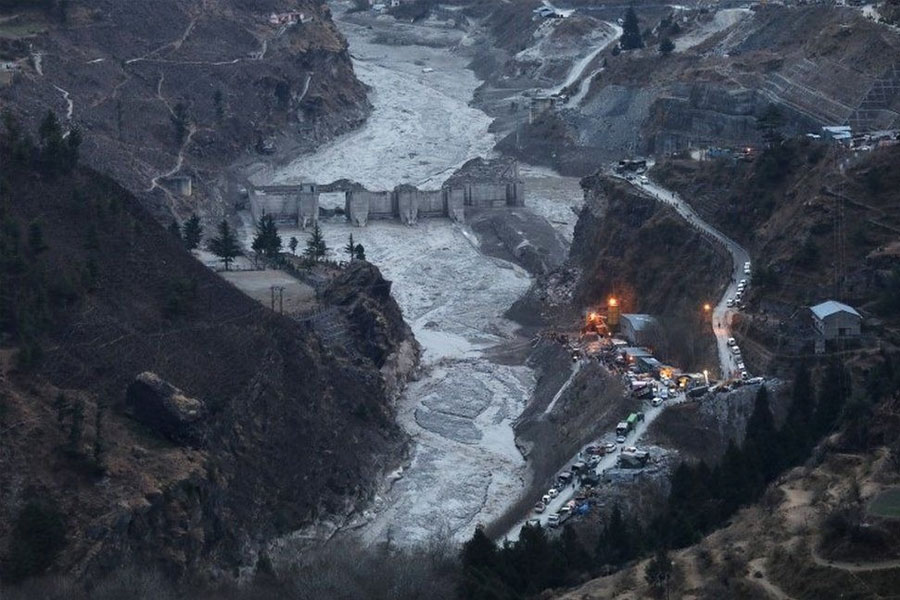- Pakistan is among the countries most affected by climate change, leading to infrastructure damage and loss of lives.
- Experts warn of another potential spell of devastating floods, particularly in Gilgit-Baltistan and surrounding areas.
- The Shounter Valley, known for its stunning landscapes, is experiencing the adverse effects of climate change, increasing the risk of glacier bursts and floods.
Climate change has impacted many parts of the globe, but, unfortunately, Pakistan is one of the most affected countries. Not only has the phenomenon caused massive damage to the infrastructure of the country, but it has also taken many lives.
While Pakistan has still to recover from the devastating floods of the 2022 monsoon season, experts have asked the country to prepare for another spell. This time around, the northern area of Gilgit-Batlistan and surrounding areas are also in trouble.
Shounter Valley, nestled in Azad Jammu and Kashmir, is a true paradise on our planet. Its awe-inspiring mountains, cascading waterfalls, pristine lakes, and enchanting glaciers make it a place of unparalleled beauty. However, the detrimental impacts of climate change are becoming increasingly apparent in these mesmerizing landscapes.
Muhammad Luqman, a dedicated local volunteer, expresses grave apprehension about the future. “Given the alarming pace at which glaciers are melting, I fear that a potential glacier burst, similar to the unfortunate incident in Gilgit-Baltistan last year, could put 15,000 people in this region at risk,” he expresses with deep concern.
Also Read:
Female Victims of Pakistan Floods are Suffering from UTIs & Reproductive Complications: WaterAid
Recalling the 2010 Shounter Valley Pakistan Flash Floods
In 2010, the serene Shounter Valley was ravaged by devastating flash floods, causing widespread destruction to crops, and residential homes, and leading to severe land erosion.
Witnessing the distressing aftermath firsthand, residents of Domail Pine village observed the harrowing consequences. They witnessed the rapid rise of floodwaters in the nearby stream, carrying the forceful torrents originating from the towering glacier.
Recalling the impact of the previous year’s flood, Muhammad Rasheed Mughal, a 75-year-old villager, recounts the tragedy that engulfed their community. “Bridges, residential houses, and land were all swept away by the flood last year. With heavy snowfall in the mountains this year,” he expresses with concern.
“If the glaciers burst once more and trigger another flood, the remaining village will be washed away. We have no one to rely on but the help of Allah,” he solemnly concludes.
Melting Glaciers and Rising Lakes: Pakistan’s Growing Flood Threat
Pakistan proudly possesses an impressive count of over 7,000 glaciers, standing as one of the highest numbers for any country worldwide.
Startling data from the United Nations Development Programme (UNDP) reveals that by 2018, the melting glaciers in the Gilgit-Baltistan and Khyber Pakhtunkhwa regions of Pakistan had contributed to the formation of over 3,000 lakes.
Among these lakes, 33 are now deemed highly vulnerable to flooding, presenting a grave danger to the safety of more than 7 million individuals residing downstream.
In a catastrophic event last year, the nation faced an unprecedented deluge accompanied by unforeseen monsoon rainfall. The calamity resulted in one-third of the country being submerged, claiming the lives of approximately 1,700 people.
Disturbingly, the impact of floods in Pakistan has affected over 33 million people, predominantly in the provinces of Sindh and Baluchistan, causing widespread devastation and disruption.
Also Read:
Survivours Share What it’s Like Being 9 Months Pregnant During Pakistan Floods
Share your thoughts with us in the comments below.
Stay tuned to WOW360.
